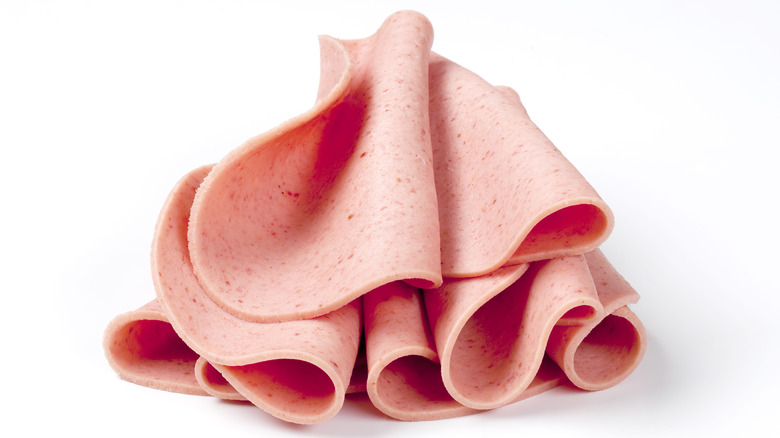The Reason Bologna Is So Cheap
The world is full of mystery. We live in an era of staggering scientific discoveries, but there are still innumerable areas in which human knowledge is dramatically limited. One food remains confounding to most consumers. Before you make your next sandwich, you should know what bologna is and why the mysterious meat is so inexpensive.
Though it is seemingly a modern meat product, you need to look back to 1600s Italy to uncover the ancient origins of the bologna sandwich. The food has gone through a lot of changes over the centuries, and American sandwich bologna as we understand it is an amalgamation of different meats stuffed into edible sheaths in a manner that is comparable to a hot dog. In fact, many will contend that bologna is just a flat hot dog. The mix of meats, processed nature, and also the social history of this supermarket staple all played a part in bologna becoming a bargain bite.
Bologna booms during the Depression
Bologna draws its name from the Italian city where it was born. It was originally called mortadella and was made out of pure pork. Mortadella is much less processed than bologna, so the intact pieces of the fat, spices, and nuts that are mixed into the meat remain on display. What bologna actually is today is a far cry from this original pork product.
Much of the modern bologna market can be attributed to one man: Oskar Ferdinand Mayer. His name, though it's been subject to Americanization, can still be seen on grocery store shelves today. In the 1920s, Mayer and his brothers began to sell the first bologna, which was made using classic European recipes. Oscar Mayer, as the siblings called their company, invented vacuum seal technology, which meant that their meat could be sold sliced. When the Great Depression left many families struggling to afford food, bologna's low price point and shelf stability made it a must-have in any kitchen pantry.
Bologna remains an affordable option
Modern Oscar Mayer bologna is made out of mechanically separated chicken and pork. The USDA tells us that mechanically separated meat is made by subjecting animal bones to intense pressure. This will rend any edible meat from the inedible bone. It has a consistent texture and appearance, which helps explain why bologna is so uniform. Bologna also uses less intact ingredients than its predecessor, mortadella, and this contributes to its cheapness.
Aside from its preparation and preservation, bologna is cheap because of its ubiquity. In the 1940s, just a few decades after Meyer invented it, bologna sandwiches became the backbone of the first National School Lunch program. The 1980s saw bologna being served as a standard part of prison meals, and the practice persists in a handful of jails today. Bologna's status as a bargain bin meat is no reason to turn your nose up at it. In fact, if you want a cheap meal that has its roots planted throughout American history, cook up a fried bologna sandwich. This salty snack will settle your stomach without hurting your wallet.


